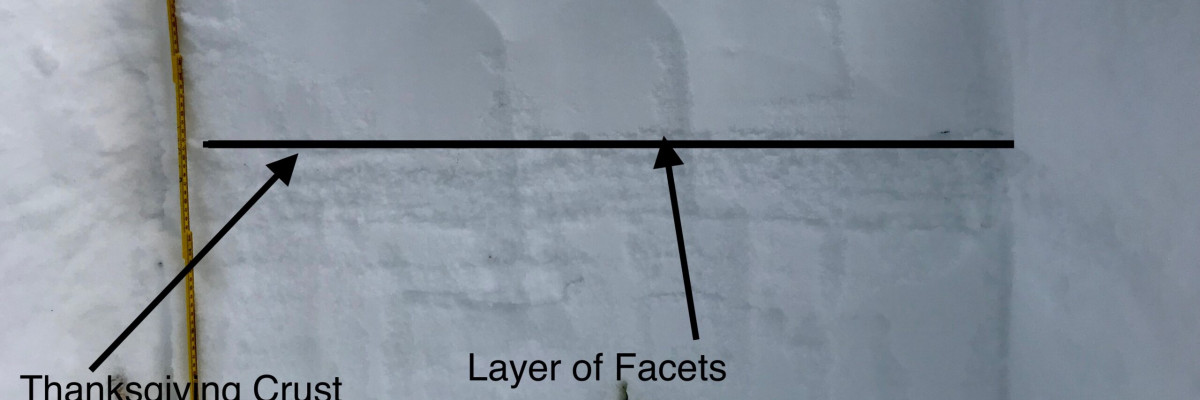The current avalanche danger is MODERATE in the west central Montana backcountry. Evaluate snow and terrain carefully; identify features of concern. Human triggered avalanches are possible.
Good morning, this is Travis Craft with the West Central Montana Avalanche Center’s avalanche advisory for December 16, 2017. This danger rating does not apply to operating ski areas, expires at midnight tonight and is the sole responsibility of the U.S. Forest Service.
Weather and Snowpack
Mountain temperatures range from 15 F to 27 F in the region. Winds are 8 mph with gusts of 14 mph out of the W in the Bitterroot. Point Six, in the northern part of the advisory area, winds are 5 mph with gusts of 11 out of the WNW. The advisory area received 3 to 5 inches of snow.
Logan and I went to the southern Bitterroots on Thursday. We found near surface facets on the thanksgiving crust to be reactive in our pit tests. We also found surface hoar. The new snow has buried the surface hoar. These layers are throughout our advisory area at all elevations and aspects. Dig a pit to assess how reactive these layers are. Look for shooting cracks from skis and localized collapsing to identify avalanche hazards.
The primary avalanche problem is wind slabs. Leeward terrain has wind slabs. Look for rounded pillows of snow near ridgelines and recognize signs of instability such as cracking in the surface snow. Look for cross-loaded terrain as well as ridge tops.
The secondary avalanche problem is persistent slabs. The new snow will be stressing and burying layers of concern. The two layers of concern are the buried surface hoar and the near surface facets on top of the Thanksgiving crust. Dig a pit to assess how reactive these layers are before committing to any slope over 30 degrees.
Avalanche and Weather Outlook
Snow will start to taper off by midday today and return with strong winds Sunday evening. With the addition of more snow and wind expect the avalanche danger to increase.
If you are out in the backcountry, please send us your observation, these are very helpful in producing the advisory. I will issue a weather update tomorrow December 17, 2017.
Ski and ride safe.














